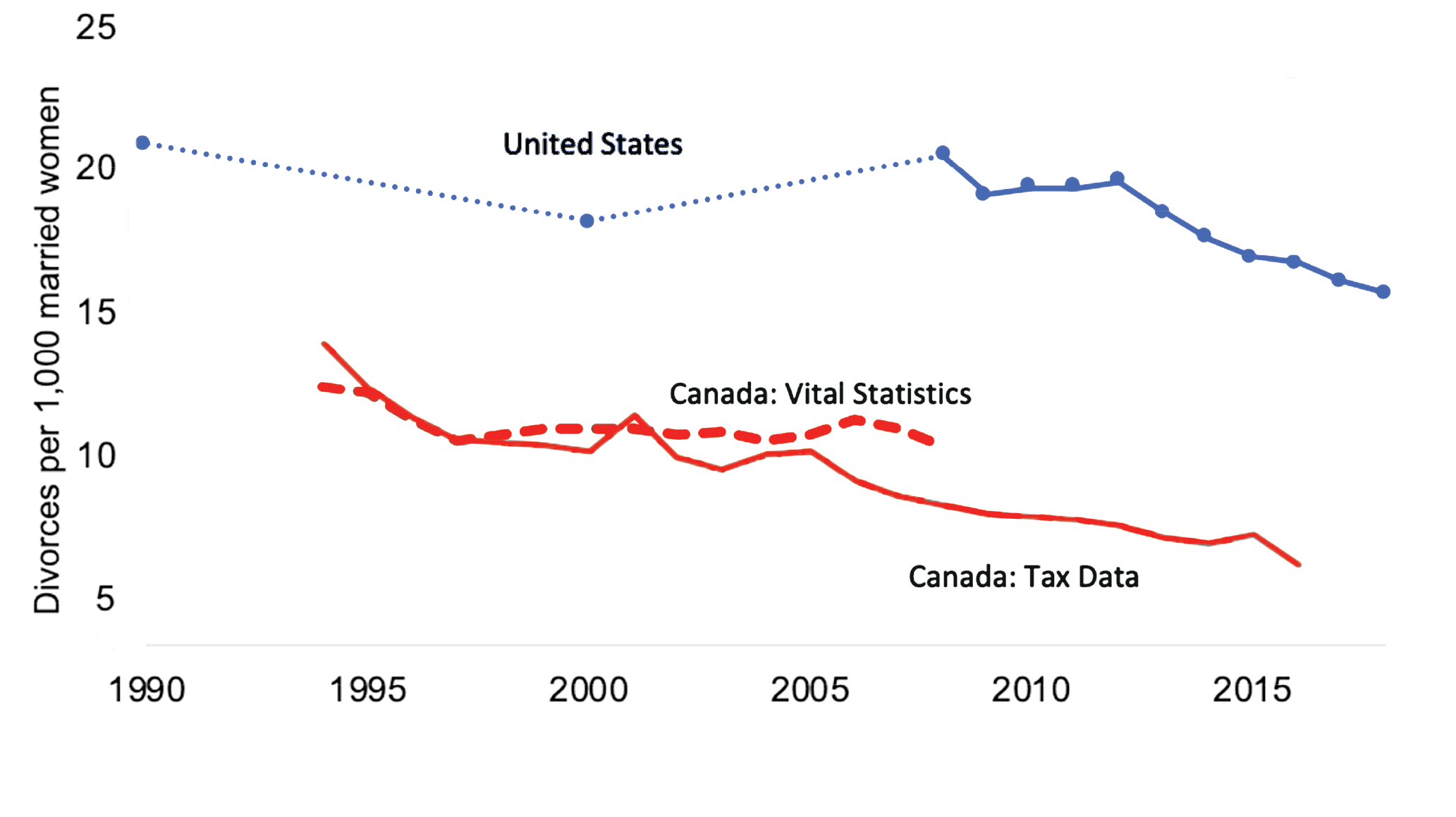Western University demographer Rachel Margolis examined 25 years of tax filings and discovered that the number of Canadians who divorce has been in decline for about the past 15 years. Canada now has about six divorces for every 1,000 adult women, compared to about 10 per 1,000 in 2006.
“Divorce rates aren’t necessarily markers of the health of a society, since there is no ideal level of divorce,” Margolis told The Catholic Register in an e-mail.
An interesting finding, she said, is that although marriage is “highly revered” across all social classes, it has become more common among the highly educated, while divorce is much more frequent among people with less education and lower income.
“It seems as though people with more resources have access to this institution and are better able to ride the bumps of relationships and the stresses of life,” she said.
The divorce numbers, combined with other information about who gets married in the first place, opens a window on class divisions in Canadian society, said St. Jerome’s University sociology professor David Seljak.
“These statistics show that people who have access to resources, people with higher education and consequently higher incomes and a more stable life, they’re the most likely to get married and stay married. It’s the other groups that really need greater help and support,” he said.
For Catholics, the finding that marriage is skewed towards the upper classes while marriage breakdown disproportionately affects the less well off raises questions about family policy and the obligations of the state to married people, said Seljak.
“As the family goes, so goes the nation and so goes the whole world in which we live,” St. Pope John Paul II said in 1986.
Comparison of Divorce in Canada and the United States

Fast Facts: Divorce in Canada
- Divorce rates in Canada have fallen in tandem with declining marriage rates. While almost three quarters of Canadians 25 to 64 live with a partner, 21.3 per cent were living common law in 2016, compared to just 6.3 per cent in 1981, according to Statistics Canada.
- Divorce among adults in their 20s and 30s has fallen by about 30 per cent over the last decade, according to demographer Rachel Margolis.
- Divorce rates for older Canadians increased through the 1990s and 2000s, but the grey divorce phenomenon has quieted down since 2008 and it never reached the levels of the “grey divorce revolution” in the U.S., according to Margolis.
- Canadian divorce rates overall have been declining since 2006, from about 10 for every 1,000 married women to six divorces per 1,000 women in 2016.
Catholic Organization for Life and Family executive director Michel MacDonald said both society and the state have a responsibility to make marriage “a reasonable possibility for people, especially those in the lower economic strata.”
“I do think it is imperative that the government help make marriage a real, livable possibility and not simply for the comfortable middle class,” he said.
When Canada decided to regulate divorces in 1968, Canada’s bishops were clear about Catholic teaching on the subject.
“When two baptized persons marry, they are united until death by a bond that is both natural and sacramental,” the Canadian Conference of Catholic Bishops said in their submission to Parliament.
But the bishops were not trying to impose Catholic theology on the law of the land. Instead, they wanted Parliament to find ways of supporting married life, even as lawmakers made divorce faster and easier.
“Legislators must never lose sight of the sacred value of the family, the primary and basic cell of society,” they said.
Statistics Canada stopped collecting marriage and divorce statistics after a 2008 “strategic review.”
Saving money by leaving out such basic information about the lives of Canadians strikes Seljak as “very strange.”
“It’s clearly a very important statistic,” he said.
Margolis agrees. “Marriage and divorce statistics are really important to collect,” she said. “We call registers of births, deaths, marriages and divorces ‘vital statistics’ because they are capturing the most important life and death and family events of the life cycle.” If Statistics Canada is trying to measure the well-being of the nation, it needs much more than the per capita Gross Domestic Product, Seljak said.
“If you look at the 10 countries with the highest GDP per capita and you look at the countries that score highest on something like the human happiness index, they’re not the same countries,” he said. “A high divorce rate is not an indicator of a happy society.”
(Canada ranked ninth in the 2019 World Happiness Report, down from seventh spot in 2018. In per capita GDP, Canada is 17th.)
But a low divorce rate doesn’t necessarily mean we’re happier, either. Especially if “the drop in the divorce rate is tied to the drop in the marriage rate,” Seljak said.
“People who can’t marry, or feel they can’t marry because they are still trying to establish themselves — get a job, get a career — these are not going to be happy people,” Seljak said.
The economic barriers to married life may begin with the gap between wages and housing costs, but they don’t stop there. Income inequality in Canada can be measured by who can afford child care and the economic gap between average families and the 10 per cent of Canadians who can afford to have one parent working while the other stays home to raise children.
“We have no national child care policy. Does that make family life more difficult? I think that’s a question that Catholics should be asking themselves,” Seljak said.
“If the Church sees itself as pro-family, and it traditionally has, then should the Church also be pushing more aggressively for something like a child care policy?”


